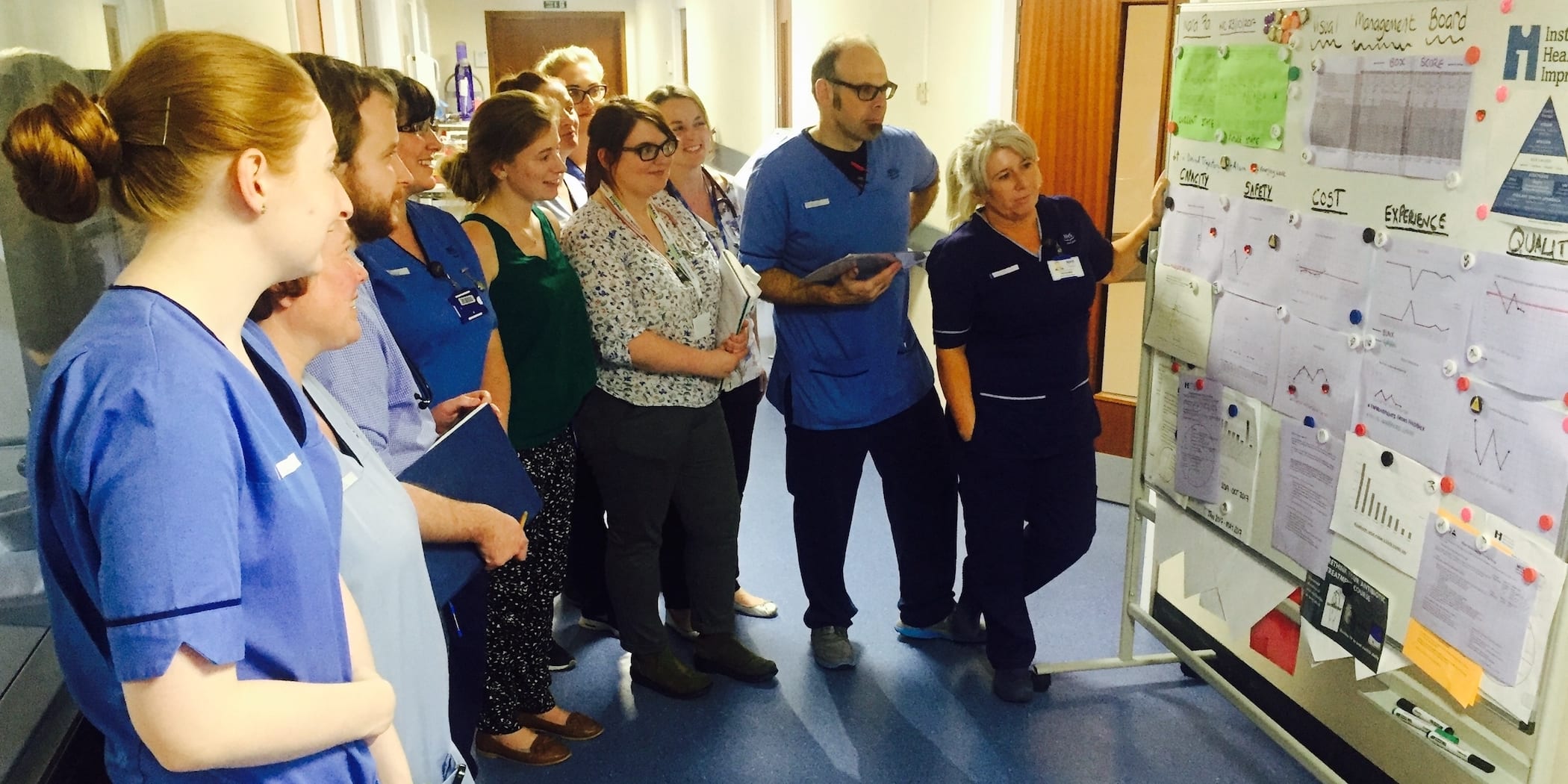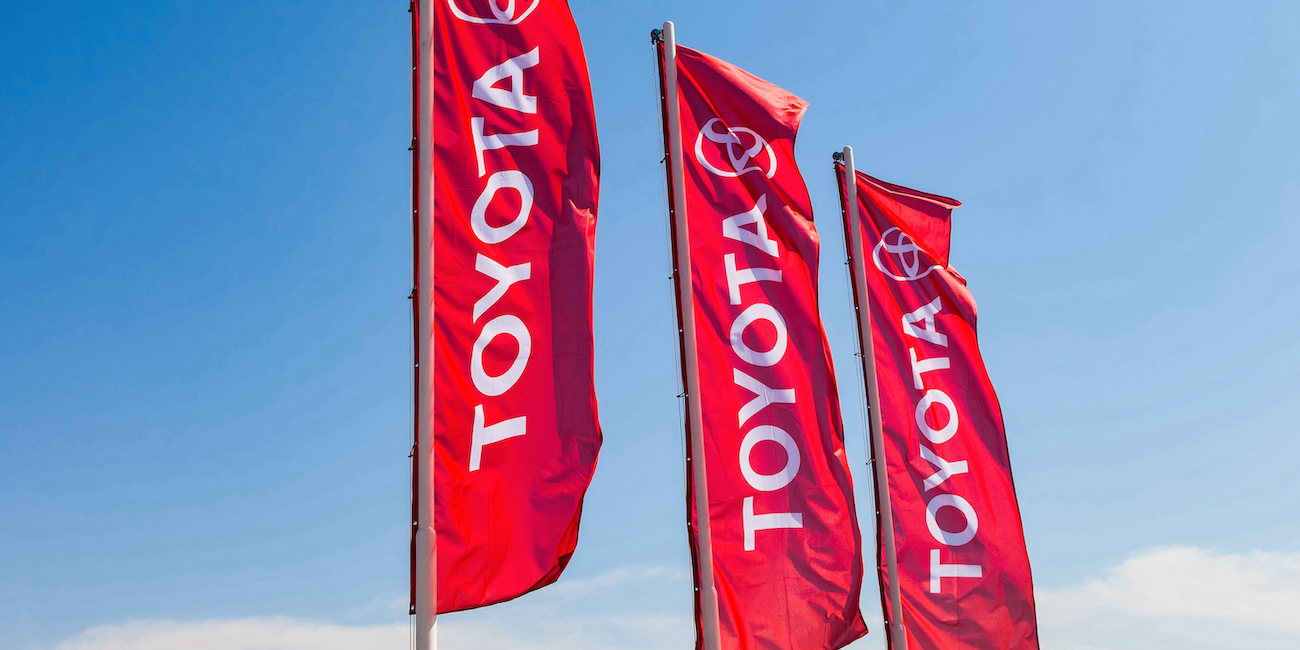
When front-line employees open the eyes of management
INTERVIEW – The CEO of a Scottish health board takes us through the organization’s long lean journey, reminding us that allowing people to take the initiative often leads to the most impressive discoveries.
Interviewee: Elaine Mead, CEO, NHS Highland - Scotland
Roberto Priolo: Tell us about the region NHS Highland serves, please.
Elaine Mead: NHS Highland is the largest geographic Health Board in Scotland, serving a large area of around 320,000 people that goes from John O’Groats in the very north right down to Campbeltown in the south (including 36 inhabited islands). This is quite a rural and remote region. We have four main hospitals.
RP: Has NHS Highland been on an improvement journey for long?
EM: It has. I have been here for 12 years, the first six as COO and the last six as CEO, and we have been on the journey the whole time. Over the years we have worked as part of national collaborative as well as with a number of organizations, from General Electric to the Institute for Healthcare Improvement. For the past five, we have been partnering with Virginia Mason.
It’s been quite the learning journey for us. As it often happens, at first we were really excited about our ability to do Rapid Improvement Events and about the tools. Our people had been exposed to a lot of different initiatives, from the Scottish Patient Safety Programme to the Productive Hospital courses and the IHI model of change. In the organization, we have had lean work, we have had safety work, and much more. We soon realized, however, that we were getting great results but no traction, and that there was something missing. Our focus was clear – we wanted to remove waste, harm and variation – but we didn’t have a structured approach in place to tackle problems. (Instead, we had been relying on different programs and methods, like clinical pathways to target variation or the Scottish Patient Safety Programme to reduce harm.)
It is this need for structure that made lean thinking so attractive to us: the more we understood it, the more we realized it represented a different culture that NHS Highland could aspire to develop. Most interesting for me, it was very empowering for staff. People had been exposed to the idea of change through our other initiatives, but lean seemed to have the potential to get them on board once and for all and transform their way of thinking. That’s when we decided to make lean our management system. The Highland Quality Approach was our way to focus our efforts, rather than jumping from one initiative to another: it is a blend of ideas and approaches (I admit we steal shamelessly from whatever organization has something that inspires us).
RP: Do you rely on a Lean Team?
EM: We have a Kaizen Promotion Office and a Director of Quality and Transformation, but we very clearly felt that this needed to be something owned by everybody. That includes the Board, by the way. We didn’t want a bunch of consultants coming in and doing things “to us”, as we knew this type of approach typically has a rather limited impact. What we were after, instead, was real engagement of front-line staff. This has started with the Scottish Patient Safety Programme, but it was lean that really enabled it. Yes, we have our trainers and materials, but we always tied their work with the idea that anyone, from the floor to the Board, should be able to see what our organizational objectives are.
RP: How has leadership changed?
EM: As executives, we have always been patient-centric, but we had forgotten how to communicate that to staff. The most important contribution of lean thinking to our evolution, in my opinion, is to help people unlearn all the wrong ways of working they were taught before. This applies to us leaders before anyone else: we get instant gratification from going out and solving a problem, but our roles needs to be more enquiring, supportive and humble. The superhero approach had to go. We had to become coaches, and go in to help people solve their own problems. Nowadays, I am out on the gemba at least half a day every week, to understand what’s going on and coach people. That’s the biggest change I have experienced as a leader. It is so fulfilling to enable people to make the changes they know will make a difference for our patients.
RP: How have people responded to your attempts to change things?
EM: Giving people the permission to do things, to try out their hunches, has had a massive impact. In fact, front-line employees are the beating heart of our improvement efforts. Catchballing our decisions out to the teams has led us to some startling discoveries, and it has opened our eyes to what should come next in our journey (and how we as leaders should behave). Let me give you a couple of examples.
When we needed to reduce the number of late discharges to improve patient flow, people got mad when they saw we were calling them “late discharges”. They helped us to better frame the problem and consequently define our objective, which today is “minimizing the time our patients need to be away from their homes and families to receive care”. That was such a humbling experience for me. We had never done any catchball before and, as executives, we thought we were being smart writing down such clever objectives. When we went out, however, what a wake-up call we got! Today, we would never write objectives without discussing them with our people first.
In the same way, when we tackled the fact that we were spending a lot of money on additional labor and suggested we reduced the percentage of bank staff, people were very clear explaining that the reason we needed so many extra people was that NHS Highland was not a great place to work. They told us our objective shouldn’t be to reduce the number of bank staff, but to “make NHS Highland the employer of choice with opportunities for self-development”. To me, the difference between the way leadership perceived the problem and the way people saw things was jaw-dropping.
RP: Is resistance a problem?
EM: Trying to improve health systems in such a dramatic way will always be met by a certain degree of open – even divisive – opposition. That’s why we focus on empowering the front line.
Additionally, we have built certain elements of lean accounting into our lean work. In collaboration with IHI, we have developed something we call “value management”: we are giving staff problems to look at with data over time and to tackle through short cycles of change, but we add a cost element to this activity. They start to link the boxscore they develop with elements of capacity, safety, cost, experience and then quality. We then do a Rapid Improvement Event, give people the tools to make step change, and then we use lean accounting to continuously monitor progress at board level so that the managers take responsibility. This has started to take away some of the criticism, because you can’t really argue with data.
RP: How much of NHS Highland has lean thinking reached?
EM: There is not a single part of the organization that has not been touched by lean in some way, with at least 60% of our staff having been exposed to improvement training. Most of our facilities (whether our hospitals or our care homes) have ongoing improvement initiatives. More importantly, we are starting to see people taking the initiative to improve on their own. However, as people come and go it is going to take a constant effort to keep moving forward.
RP: What were the most impactful decisions in setting the course of the Health Board’s lean journey?
EM: Strategically, it was the decision to make lean our management system. As mentioned earlier, this was our way to move from an approach in which we only focused on tools and techniques to one that would transform our organizational culture. In practical terms, the most important decision was certainly getting the whole executive team to commit and undertake the lean training, which sent a strong message out to the organization that this wasn’t going to go away.
RP: What can you tell me about sustaining results?
EM: I can confirm it is the biggest difficulty a lean organization faces. That’s where daily management comes in for us. The expectation is now that people know the business and take the responsibility to improve their part of the work. Lean brings rigor to our transformation, making continuous improvement possible: we ask people to report out periodically, even a year after they brought in a change. We are very clear that once you get started on the journey, there is no turning back.
Another advantage of our daily management system is that it is gradually freeing our middle managers from their crisis-management thinking. It is not their fault they think like that: the pressure on the healthcare system has meant that managers have had to become more “heroic” than ever before. As they understand (thanks to daily management) that they can’t fix every problem that appears in the organization, however, they slowly change their mindset and become more reliable partners in making change a reality. We have top managers and front-line trained and ready to go, so finally enabling our middle managers to focus on what really matters (rather than the crisis du jour) will have a huge impact on NHS Highland.
RP: Many healthcare organization struggle to get doctors on board at first. Did you have the same experience?
EM: We have all sorts of people leading improvement efforts now, including doctors, but there is no doubt they were the most skeptical to begin with (and some still are). They hated the concept of standard work, for instance, but once we told them we wanted to release them from the most time-consuming tasks, they got it.
A lot of it comes down to how you coach people, and how you communicate with them. We hooked our doctors in when we reflected back with them on the data we had gathered about their wards, practices and patients over time, and in real time. This made quality management less “warm and fluffy” and more analytical for them, and made them feel empowered to influence future outcomes.
RP: You are also embracing Agile thinking. What is that doing for you?
EM: We have been interested in agile for a while, largely because of the geography we have to work in: technology (from Apps or Zoom) helps us to better connect with each other, no matter where we are. I recently linked in to a Rapid Improvement workshop from the United States! (Although I did have to wake up at 2 in the morning to do that.) Enabling this level of connectivity tells people that what we are trying to do is important.
THE INTERVIEWEE

Read more



CASE STUDY - This article reports on the efforts that Erasmus Medical Center in the Netherlands has made to apply Theory of Constraints to patients' length of stay.


INTERVIEW – Looking back at the time he spent at Toyota, Mark Reich reflects on his experience working with Nate Furuta and on his legacy exporting Toyota cultures around the world.


CASE STUDY – The reimbursement department of the largest independent insurance company in Brazil has brought together lean and digitalization to improve its service to customers.


OPINION – When do our mistake become an ominous sign that we are giving up on our customers and people? Following the salmonella contamination in cereals in Israel, the author reflects on business purpose and the importance of transparency.

